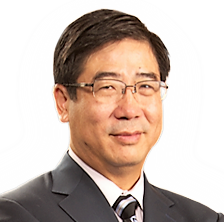WEST ORANGE, NJ, UNITED STATES, April 27, 2022 /EINPresswire.com/
The words may not roll readily off the tongue, but endoscopic foraminotomy has rapidly become a successful, minimally invasive approach for relieving pressure on compressed nerves in a patient’s neck or back – even in relatively complex situations, says Kaixuan Liu, MD, PhD, founder of Atlantic Spine Center.
“The reasons are clear. Endoscopic foraminotomy can often be performed within an hour or less as an outpatient procedure under local or intravenous anesthesia, requires only a small incision for insertion of an endoscope, preserves the mobility of the neck or cervical spine, and results in quicker recovery time, less blood loss, and limited post-surgical pain,” explains Dr. Liu, a world-renowned spinal surgeon. “Besides, the procedure’s success rate is 80 percent or better.”
Scientists concur. In a study published in a 2021 edition of Pain and Therapy (10.1007/s40122-021-00309-1), authors write that endoscopic foraminotomy performed to relieve a pinched nerve in the lumbar spine (lower back) resulted in a patient satisfaction rate of 85 percent or more, relieved the disability and pain associated with the condition, and was comparable in its success to more traditional surgical procedures, “with almost negligible adverse events rates.”
Meanwhile, investigators’ analysis of a like technique for resolving disc herniation and expanding the openings between bones in the cervix demonstrated similar successful results, as reported in a January 2022 issue of Orthopedic Research and Reviews (10.2147/ORR.S349701).
The procedure’s name – endoscopic foraminotomy — comes from the surgeon’s use of tiny instruments and an endoscope – a tube with a camera at one end – to widen the foramina, natural bony openings in the spine. Enlarging foramina blocked or partially blocked by disease or deterioration restores normal passage of nerves along the spine and cervix, Dr. Liu says.
Degenerative spinal or cervical disease from aging and lifestyle factors can result in a common disorder – stenosis – which is a narrowing of foramina. Stenosis compresses nerves, oftentimes causing ambulation and motor control difficulties, weakness, numbness, balance problems, and debilitating pain. The pain sometimes radiates to the buttocks and legs or arms.
The National Institutes of Health (NIH) reports that one in 1,000 individuals over age 65 in the United States and five of every 1,000 persons above age 50 will develop spinal stenosis.
“The prevalence of [spinal stenosis] is predicted to increase to about 18 million in the next decade. For adults above the age of 65 years undergoing spine surgery, lumbar spinal stenosis is the leading diagnosis.” That’s because the “nerve root area ratio decreases” the further one goes down the lumbar spine, and this ratio decline increases the incidence of spinal stenosis, according to the NIH.
Other conditions that may lead to irritated and pinched nerves in the back or neck include herniation or bulging of spinal and cervical discs, disc slippage, arthritis, spinal instability, sciatica, radiculitis, and failed prior back surgery.
“Endoscopic foraminotomy starts with the insertion of an endoscope through a small incision. The endoscope’s camera provides direct visualization of the area of the spine or cervix requiring treatment,” Dr. Liu, says in describing the procedure. “The spinal surgeon locates the impacted nerve or nerves and inserts the needed tools through the endoscope, avoiding any unnecessary disturbance of muscles and ligaments. From that point, the surgeon carefully removes any bone spurs, ligament overgrowth, arthritic lumbar facets, or disc material that may be causing a foramen to narrow, then opens up the passageway using radiofrequency, lasers, or other tools.”
Researchers say endoscopic foraminotomy is especially useful for treating elderly patients and those with additional health problems that increase the risks for undergoing a more traditional back surgery.
“Advancements in surgical techniques are becoming ever more important as the number of back and neck problems are expected to increase,” Dr. Liu states. In fact, 80 percent of all adults are expected to experience lower back pain from all causes at sometime in their lives, statistics indicate.
Aging may be a leading enemy of the spine and cervix, but individuals still can take steps to maintain a healthy back or neck for as long as possible, Dr. Liu advises. He offers these tips:
Avoid too much bending or lifting within an hour or two of awaking from sleep. Pressure within discs rises by nearly 250 percent during a normal night’s sleep because the discs are fully hydrated, making them more at risk for herniation, say online experts at SPINE-health.
Walk, walk, walk. Walking helps strengthen core muscles and increases blood flow to the spine.
Use proper techniques when lifting something awkward or heavy. Squat and lift with the legs rather than bending forward and stressing the back.
Sleep on the right or left side, using a firm mattress and placing a pillow between the legs. Sleeping on the side takes stress off the back; the pillow reduces pressure on the hips. And sleep on one pillow. When the head is too elevated, the cervix suffers.
Always ensure correct posture. Keep the back straight, especially while sitting in front of a computer. Take frequent breaks from sitting. Stand and stretch whenever possible.
Place the mobile phone on speaker call and hold it in front of you. Putting the phone to the ear prompts a person to bend the head too much the side, placing the neck in an awkward position.
Finally, “practice good nutrition and know when to put the fork down. Obesity is at epidemic levels in the United States, and excess body weight is what places incredible stress on the spine,” Dr. Liu emphasizes.
Atlantic Spine Center is a nationally recognized leader for endoscopic spine surgery with several locations in NJ and NYC. www.atlanticspinecenter.com, www.atlanticspinecenter.nyc
Kaixuan Liu, MD, PhD, is a board-certified physician who is fellowship-trained in minimally invasive spine surgery. He is the founder of Atlantic Spine Center.

